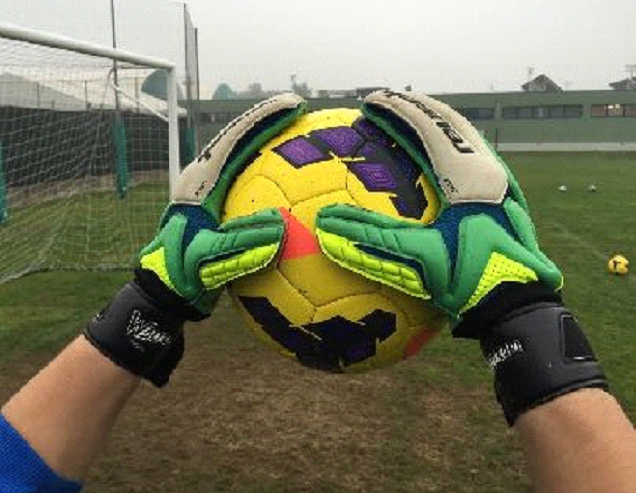Learning how to catch a soccer ball is a fundamental technique of goalkeeping. One thing is for sure…
A goalkeeper with a good hold of the ball stands out.
Key Points
- Security behind the Ball – Thumbs together
- W Catch
- Triangle Catch
- Absorb the ball with your hands, elbows and body
- Focus – Watch the ball hit your thumbs
- Elbows parallel
- Grasp the top portion of the ball
Is Catching the ball a forgotten priority?
In today’s game it may look like goalkeepers are more inclined to parry than to catch the ball. But how much of this tactic stems from the lack of focus on technically securing the ball? Are coaches overlooking the importance of catching and instead prioritizing intentional deflections and parries due to a sense of security?
We feel it is very important to prioritize catching the ball, it must be second nature to a goalkeeper. Just like passing and receiving for a field player….and for a goalkeeper as well in today’s game..
How To Catch A Soccer Ball
“W” Catch or “Triangle” Catch? – what shape catch do we want to enforce when developing goalkeepers? When goalkeepers are young, and have smaller hands with relation to the size of the ball, it might be difficult to catch the ball with a W (ends up looking like a vertical sandwich catch), therefore instead we can have them try securing the ball with a triangle catch (thumbs and pointers almost touching). A W catch is when our thumbs are close together and located at the center of the oncoming ball, while the rest of our fingers are spread, creating the W shape with the pointers and thumbs. However, as goalkeepers’ hand size increases and is more comfortable with handling, a W catch can be a viable option since the pointer fingers are long enough to separate and still have a good grasp. Remember, each goalkeeper has a different growth rate and body structure, and may more naturally catch a ball with a triangle versus a W. In the end, and most importantly, the goalkeeper has to feel comfortable and the hands need to create a layer of security behind the ball.
As we secure the ball, we want to absorb the ball with our fingers, arms, elbows and upper body. These body parts work together to best absorb the impact of the ball, preventing rebounds. As we keep our eyes on the ball, and watch the ball hit our thumbs, we also want to focus on catching the top 4/5 ‘ths of the ball. We rather catch the top portion of the ball than the bottom or the face of the ball. This top portion catch creates a potential rebound that drops below us and is easily recoverable. Whereas catching the ball on the face or bottom portion will create a less favorable deflection, maybe back to the pressure or over the goalkeeper and into the net (intentional parrying is different).

 When you are catching the ball, you need to move your whole body behind the ball, NOT just your hands. First move your legs to get behind the ball, your arms are attached to your body. Move your body behind the ball and behind your hands, creating the optimal security if your hands fail (slippery days).
When you are catching the ball, you need to move your whole body behind the ball, NOT just your hands. First move your legs to get behind the ball, your arms are attached to your body. Move your body behind the ball and behind your hands, creating the optimal security if your hands fail (slippery days).
Exercises you can do to improve your catch.
- Volleys to hands at various distances
- Strikes from the ground to hands
- Drop-Kicks to hands to increase power (or stack the ball on a cone for the striker)
- Single hand isolation and coordination exercises
- Forearm workouts (similar to point guards in basketball)
- Working with a weighted ball
- Using reaction balls and tennis balls for eye-hand coordination
- Repetition of different body movements before securing a catch – stabilize the upper body when catching


